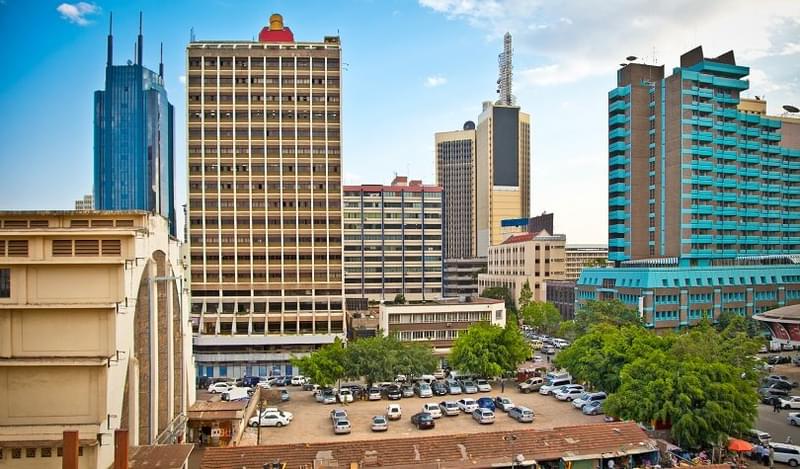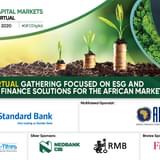Annual growth in Kenya is forecast to reach 6% (accelerating to 6.2% in the last quarter), driven by a 2% increase in consumption and stable public investment. This is set against a broader backdrop of subdued investment and growth across the continent.
SSA growth is starting to wane, with growth in Kenya outpacing the SSA average by nearly 3% according to the World Bank. Large economies and oil exporters like Nigeria and Angola that are grinding to a halt, largely the result of depressed oil prices, and minnow economies like Tanzania and Burkina Faso, also appear to be challenged.
According to figures from the World Bank and the International Monetary Fund, of the 54 countries that make up Africa, just 8 posted positive GDP growth between 2014 and 2015, a trend that looks set to continue throughout the remaining weeks of 2016 and into 2017; this year, 90% of African countries experienced a deceleration.
Why is Kenya bucking the trend? Drivers on the demand side are robust. Growth in Kenya being driven by consumption, and public investment – both of which are on the rise. Kenya is fast becoming a middle-income economy, and disposable income for individuals and households has seen a material increase in recent years – reaching KES5,889 per capita this year, up from KES4,486 in 2012.
This trend is most noticeably reflected in the demand for houses, services and motor vehicles, which in turn offer greater opportunities for collateralisation in a bid to expand access to credit. Access of financial services has also increased in recent years, from 42% of the population nearly a decade ago to 75% in 2015.
The supply side has largely mirrored demand-side factors. Breaking down contributors to Kenya’s GDP, the services sectors account for roughly 48.6%, agriculture 32.4%, and industry 19%. The services sectors are the largest contributors to growth performance, with the construction industry, telecoms, and home services all contributing to this growth; an acceleration of innovation across these sectors has also contributed to their growth.
One of the big exceptions within the Kenyan economy is the agricultural sector, the country’s second largest sector in terms of GDP contribution, which has seen flatlining or declining productivity, and in 2016 specifically suffered due to unconducive weather conditions.
At the same time, a lack of high quality infrastructure, low R&D, poor access to external markets, lack of coordination among the nation’s smallholder farms, inadequate incentives, and low investment all continue to hinder the sector.
While the services sector has been growing on average 20% per year since Independence in 1963, the agriculture sector has declined by 21.4%. At the same time, the agriculture sector accounts for over 61% of the country’s employment base, followed by services at 32.2% and the industrial sectors at 6.7%.
Going forward, a stable macro environment will play a crucial role in determining how Kenya’s economy performs. The outlook for inflation and the exchange rate is mixed in the medium term. Inflation rose from 6.26% to 6.47% between August and October this year, and is forecast to reach just over 7% by January 2017; but most analysts expect inflation will be successfully tamed, and hover around 6%, potentially reaching 6.8% episodically.
As long as a stable macro environment persists, we may see continued upward pressure on real wages and neutral position on interest rates.
One of the most important determinants of Kenya’s economic health in the medium to long term is the country’s current account balance, which sits at roughly 4.8% according to National Treasury statistics, and provides about 5.2 months of input cover according to the World Bank.
A primary reason for the dramatic improvement in the current account balance over the past few years is the price of oil, which has dropped over 70% since 2013. As Kenya is a net oil importer, and as oil prices are not forecast to rise very quickly through 2018, analysts believe any sudden deterioration in the current account balance to be unlikely.
Another key determinant of the country’s long-term prosperity is the state of the country’s banking sector, which has been thrown into question after several banks were placed into receivership in 2015, and following the introduction of new banking sector legislation.
On 24 August 2016, the Banking Amendment Bill 2015 (later known as the ‘Banking Amendment Act’) was signed into law by the President of Kenya, paving the way for lending rate caps as well as floors on deposit rates. The Banking Amendment Act 2016, which took effect on September 14, 2016, established a ceiling on commercial banks’ lending rates at 400bp above the base rate as set by the Central Bank of Kenya (CBK).
The Act also sets a floor on deposit rates at 70% of the base rate set by CBK. At the current CBR quantum, the ceiling stands at 14% while the floor stands at 7%. With the CBK potentially looking to ease further in 2017, there is a possibility the gap could drop further, creating what some analysts liken to a ‘closed cubicle’, and forcing the country’s many lenders to dramatically reduce the costs of their balance sheets and reduce refinance risk.
While the scale of the challenges and risks presented to the country’s banking sector vary, most agree the result will inevitably be (a) an erosion of asset quality; (b) an increase in the number of distressed Tier 3, and in some cases, Tier 2 institutions; and (c) consolidation.
Finally, the impact of public investment in infrastructure, which has declined slightly year on year, is significant – particularly for the productive sectors. With the government looking to expand its infrastructure projects, it will continue to provide a stronger foundation for long term growth and a healthy investor sentiment.
Managing the Public Purse and Stimulating Capital Market Development
Kenya is looking to boost its borrowing at a time when debt sustainability is being threatened by lower safety margins and heightened exchange rate risk. The country’s government debt-to-GDP ratio stood at 54.5% as of June 2016, and the current account deficit, at 6.26%, is greater than many African economies of comparable size.
Nevertheless, the country’s Debt Management Office, which is tasked with ensuring the government borrows sustainably and helps promote the development of the country’s capital markets, is confident it will be able to manage any potential and present risks. Kenya’s National Treasury will continue with its policy of fiscal consolidation for the 2017/18 year after increasing spending this year by 28% or KES2.3tn, reducing its capital expenditure budget by 25.8%.
The Kenyan government will target a deficit reduction of between 3% and 4%, and has prioritised three key areas for achieving this. It plans to enhance its development expenditure budget, keeping it well above the 30% of total budget expenditure mandated by law (it currently stands at 38.5%); improve absorption of funds and governance; and through PPPs, continue funding some of the country’s mega-projects, which include the second Nyali Bridge in Mombasa, the dual Nairobi-Mombasa Highway, and the Kisumu Sea Port among others.
To stimulate new investment and the development of the country’s capital markets, the National Treasury is working with a range of regulators and financial market stakeholders to create a benchmark for the country’s issuers, and improve market participation.
The Treasury along with the Capital Markets Authority (CMA) is currently looking to expand participation in the country’s secondary bond market after it began licencing banks to trade government securities last year, improving securities market liquidity.
It is also looking to open up new pockets of investment and set the benchmark for sub-sovereign and corporate issuers by exploring a potential sukuk issuance, and assessing opportunities to issue bonds denominated in yen and yuan.
The Treasury will also set out its policy on green bonds; it is expected to clarify the tax regime surrounding the issuance of these instruments, and may extend the same tax benefits currently attributed to infrastructure bonds. Diversifying the sovereign’s funding base is a central component of its active risk management strategy, and a necessary step towards reducing the deficit and drawing in new investment.
Increasing Market Depth to Remain a Priority
Despite being Africa’s third largest economy, and one of the most diverse on the continent, Kenya’s bond market is still fairly young. The country has about KES96.5bn (US$947mn) in outstanding local currency corporate bonds, dwarfed by the KES1.5tn in outstanding local currency sovereign debt, and US$2.75bn in sovereign Eurobonds.
Compare this with South Africa, by far the continent’s deepest capital market, which has over ZAR1.5tn (US$124bn) in outstanding local currency sovereign bonds, US$15.5bn in sovereign Eurobonds, and ZAR275bn in corporate bonds.
In Kenya – and across the EM universe – increasing currency volatility and a strengthening US dollar has once again brought the local capital markets into focus for borrowers, despite the prominence of infrastructure in the credit-based financing pipeline (which traditionally favours hard currency debt).
That said, there is an opportunity to deepen the local currency credit market. Local capital markets have the capital needed to finance the infrastructure projects; it is the natural home for long dated infrastructure assets, and helps mitigate forex risk. Capital market structures lend themselves to risk tranching to match investor appetite, while local market structures provide favourable pricing to sponsors of infrastructure projects.
Attracting international investors is key, but challenging. Although local capital market investors understand the local market dynamics well, foreign participation in the country’s market is low for a number of reasons: lack of availability of investable products; issuances are few and far between, and largely dominated by the sovereign; and, tight liquidity due to the dominance of ‘buy and hold’ investors.
Progress is being made on a number of fronts. The sovereign is looking beyond the local market when issuing bonds, both to diversify its funding sources and to ensure it does not put a strain on liquidity. The country’s regulators and market makers are also looking to introduce new products that attract a wider spectrum of investors (green bonds, for instance).
Indeed, Kenya's Nairobi Securities Exchange expects its first exchange traded fund (ETF), highly liquid securities that can be developed from both stocks and bonds, to be approved by the regulator this year, with trading to start soon after. Efforts such as these will no doubt create new opportunities for both local and international investors.









